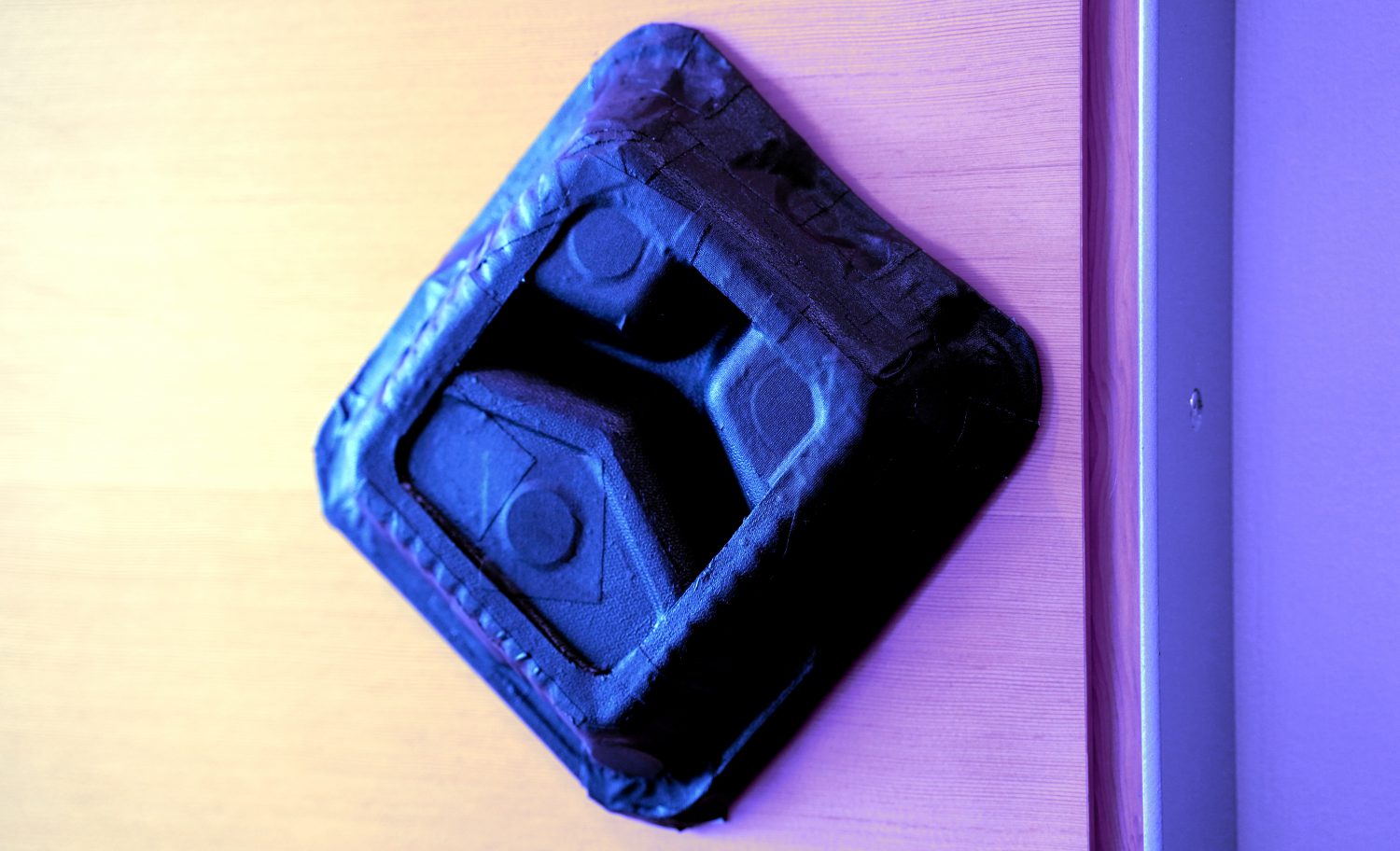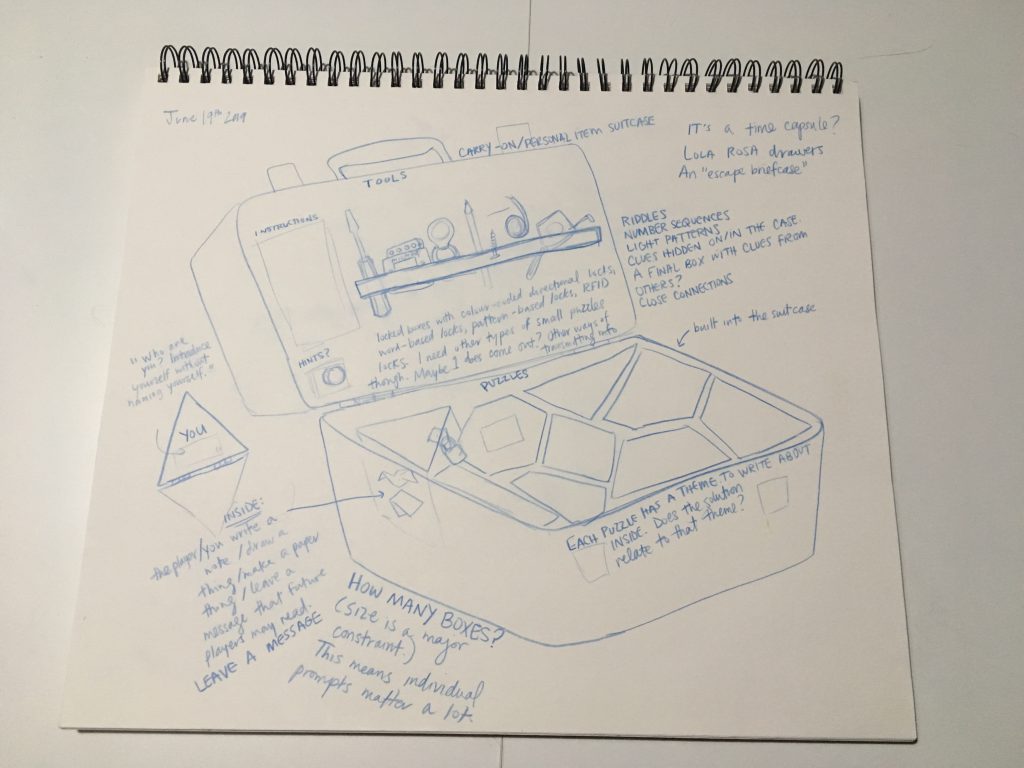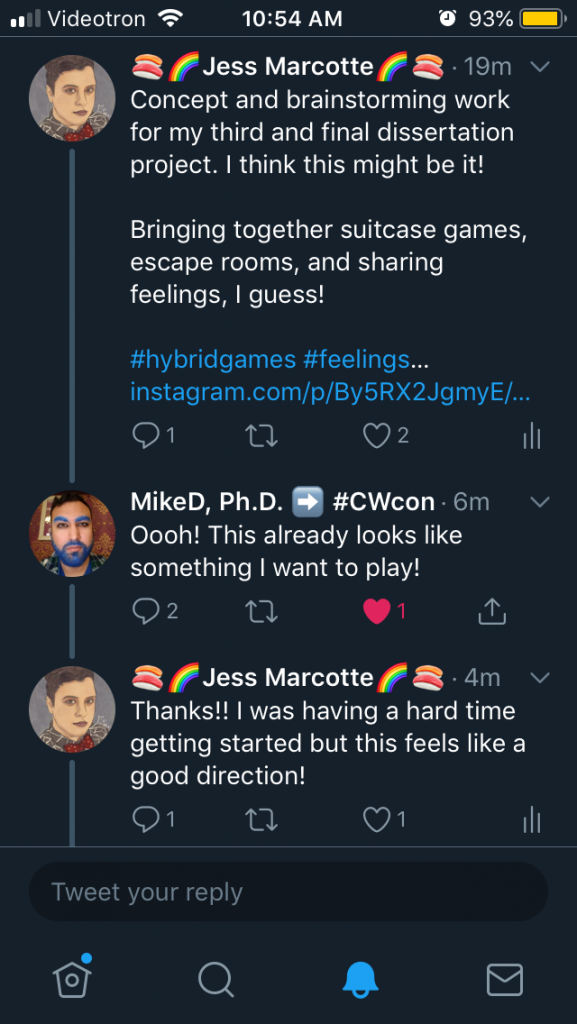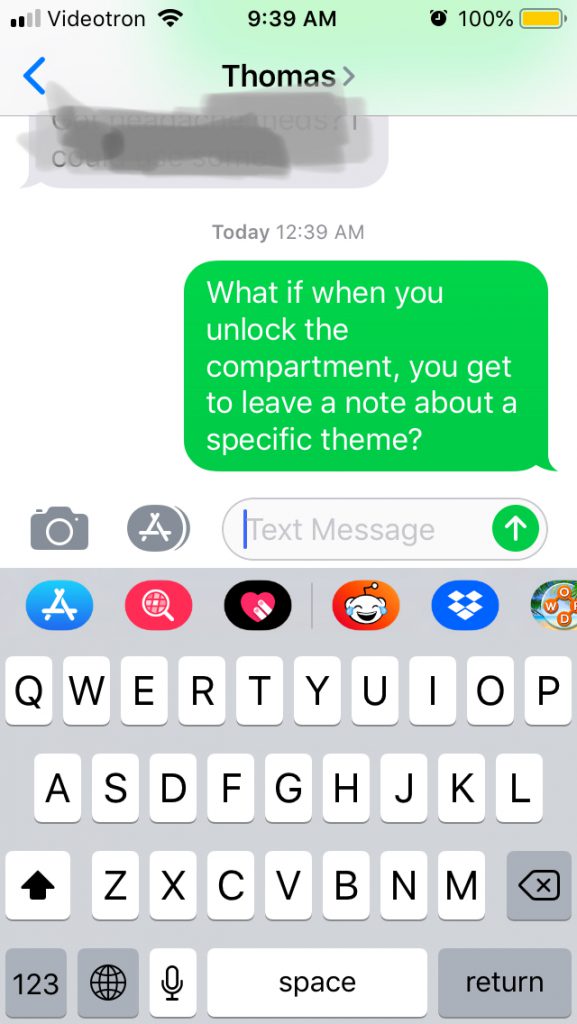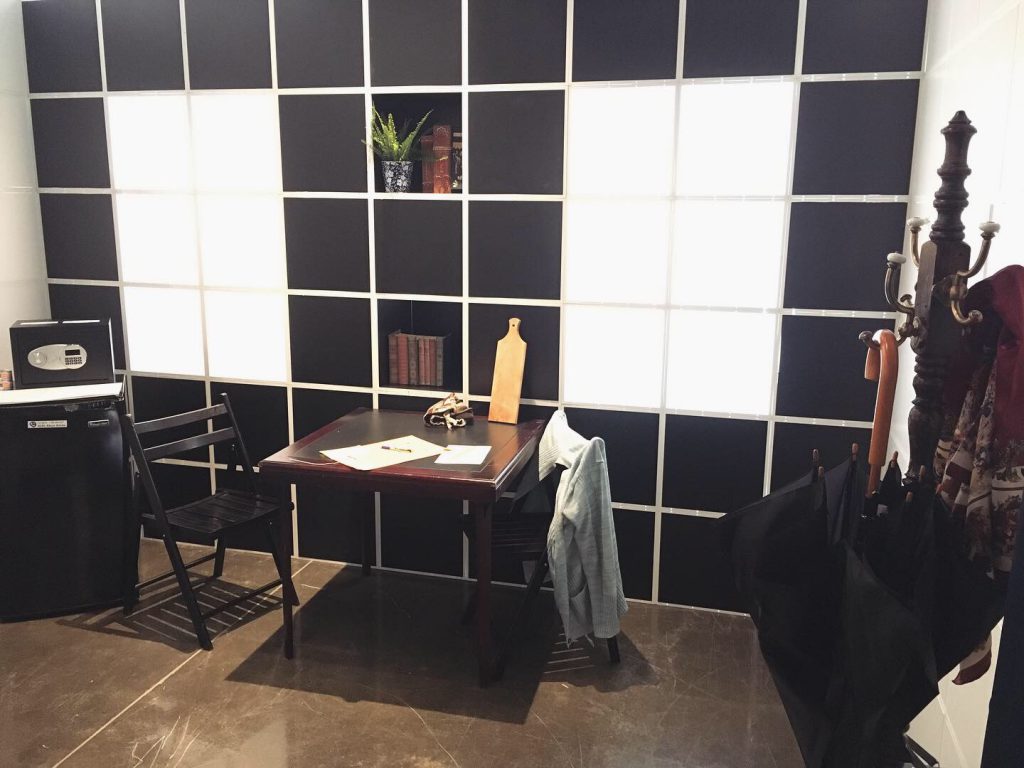I have an unsurprising confession to make: in the time since my last blog post, I crunched to get a version of TRACES ready for playtesting at Arcade 11.
You can follow the traces (ha) of my digital programming crunch here: https://github.com/jekagames/traces
Between each commit, I was working with all the different broken processes unless I was sleeping.
The other physical object-making crunch that I engaged in is evident on instagram.
Everything took longer than expected. There was a lot to do to get the project ready — and the fact that each task took longer than I expected it to — each and every single task — was a constant source of stress.
The documentation for each of the libraries that I was using was incomplete, poorly-written, or assumed knowledge that I didn’t have (or was never meant to be combined in the ways that I needed). They’re usually open-source of course, and I appreciate that people have other jobs and other work, but when your constructor uses the same name for the variable and the data type without explaining, that’s really difficult to parse (looking at you, socket.io).
For the installation of certain things on the Raspberry Pi, I got it to work once and I’m not sure why it worked, because it wouldn’t work again on the other machines even though I followed the same instructions. So, instead, I cloned the card. I’m a bit nervous about when I have to update the code and the audio files and such. I hope it’ll go okay.
My 3D models would look fine in theory, but would have physical limitations or issues when I actually printed them. I had to redesign one particular object something like 4 or 5 times — and wait in between each re-design to print it to see what problems arose.
So, I expected to have around a week to build certain parts of the project and instead wound up with 24 hours. What a mess.
I am very, very grateful to the people that helped me — by volunteering their voices, by helping me with programming, by physically building things with me.
Right now, that’s these folks (quoted from my credits):
“VOICE ACTING
System Voice – Natural Reader (modified)
The Handler – Jess Rowan Marcotte
Object 10 – Ash Cheshire
Object 09 – Thomas Deliva
Object 01 – Gina Hara
Object 05 – Enric Llagostera
Object 02, 08 – Jordan McRae
Object 03, 04, 06 – Lukas Rowland
Object 07 – Dietrich Squinkifer
3D-PRINTED OBJECTS
Jess Marcotte (20×4 LCD cover, Arduino Uno Case top)
brandroid64 (Brandon Bowles) (Customizable Raspberry Pi 3 (A+/B+) Case)
djminnesota (Dan Johnson) (Arduino Uno Case bottom, modified by Jess Marcotte)
SPECIAL THANKS TO
Enric Llagostera and Dietrich Squinkifer for their help with all of my programming questions and for helping me debug.”
Some of that will change, though, now that I have had the chance to playtest. I have some internal playtest notes, both physically written down and that I took of my general impressions after the playtest.
Obviously, the sculptures that Tom and I made in 24 hours are not the final sculptures. I actually spent a fair bit of time calling around and contacting Molded Pulp product companies to try and find more of the kind of molded pulp that I had from our dishwasher (that I turned into objects for the game). It turns out that most local packaging companies do not make molded pulp products. One company only made 2 products, which they sold by around 20 000 units at a time: 4-cup holders and egg cartons.
So. I went to a caterer’s store and bought molded pulp takeout containers and plates in a variety of shapes. The nice thing is that they’re compostable, so I feel okay about using them for that reason since I imagine there will be waste/mistakes (though I will be painting the final sculptures). I do have a few leftover shapes from the products I had. I’ll try to work them into what I make.
So. That’s on my list. Making molded pulp takeout container sculptures. Nice.
The next thing on my list is finishing 2 more controllers to accompany the first one that I made fully. I managed to make 2 for playtesting — one that I had fully finished and one on a wooden form that Tom helped me make. So, that’s something I still have to do.
Then, from there, I want to try and further synchronize the text that’s displaying with the audio. I think that means adding another database entry and passing a variable into it in milliseconds that also changes when a specific object from the database is called, and for me to individually check how fast the text needs to display compared to the speaking voice of whoever voices a particular object.
That brings me to two very important other items: first, it seems that some of the voices were a bit distracting to players, so I will likely have to re-record those. Certain voices may also need to just be a tad louder.
Second, it seems like some of the objects are overly didactic, leading to an overly didactic impression of the game. With some playtester advice in mind, I will be thinking about whether I should cut certain objects, about whether to add or change certain stories, and whether to shorten certain parts (like in the introduction — I think I will cut a bit out from there).
This project really changed gears in November 2018 and became more about the rise of fascism in North America, in some ways. I think that I need to return to my goal of telling the stories about trans people (particularly nonbinary trans folk) in our times. The rise of fascism is a part of that, but I think there’s a little too much of it in there right now, which is why it’s coming across as didactic. Also, I was trying to write from the perspective of people coming to the past to study it — so I guess the didactic tone in that way is part of that. But I guess I need to bring it back to the characters and personal stories.
There’s a lot to do! But I do think it’s worth taking the time to do it before I move on to the final project.
